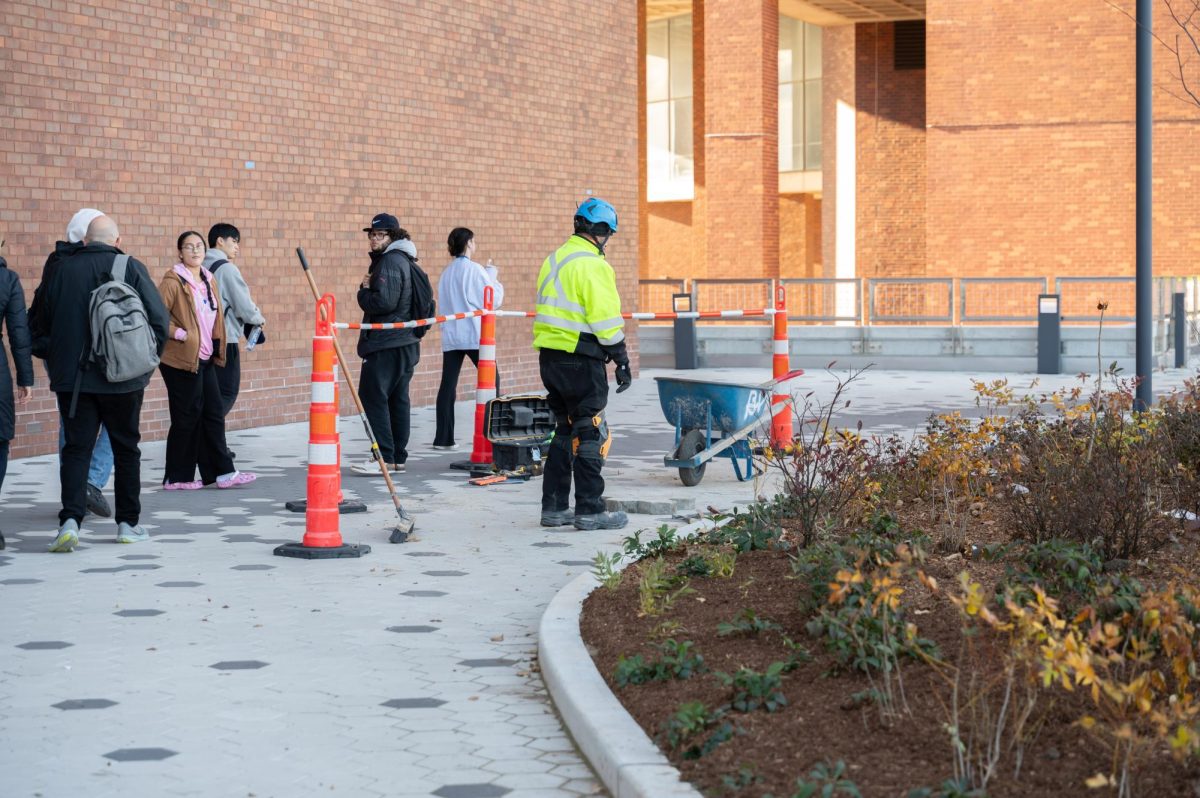According to the UMass Boston website, “UMass Boston has a strong and longstanding commitment to operational sustainability… including a commitment to net-zero carbon emissions.” [1] In fact, UMass Boston, in its Energy and Carbon Master Plan, has pledged to be emissions-free as soon as 2050. Most of the website’s language is evasive and repetitive; it’s easy to get the sense that they don’t have much to go on. That’s par for the course at UMass Boston.
Reading through this pledge, it’s clear that UMass Boston isn’t even doing the bare minimum while simultaneously pretending they’re at the forefront of ecologically friendly architecture. Just listen to the sheer number of qualifiers in this sentence: “During the growing season and when available university food services utilizes locally grown fruits, vegetables and dairy.” [2] It says a lot that UMass Boston can’t simply say it uses locally grown produce; if it were putting in the effort to primarily use locally grown foods, it would have said that, plain and simple.
Other points on the “Campus Center Recycling and Sustainability” page are flat-out misleading. The website states, “The building was constructed with a large amount of open space which provides natural lighting during the day. Many areas are controlled by timers to provide light only when needed.” [2] According to the Guardian, though, all-glass buildings are less energy-efficient than buildings with smaller windows; roughly 40 percent of worldwide carbon dioxide emissions come from constructing, demolishing and, crucially, temperature-controlling the buildings. Glass is a poor insulator, and glass buildings require extra energy to cool. [3]
All that new construction and demolition certainly isn’t helping UMass Boston be energy efficient, although they promise that the new quad will be environmentally friendly. As I’ve argued before and will argue again—how? The quad is a courtyard full of grass monoculture and a few trees. Does the soulless turf covering the quad account for 25 years of nonstop construction which, as evidenced by the past few months, has been delayed time and time again?
Here’s what UMass Boston won’t tell you. Rafael Moure-Eraso and Michael Sireci, in conjunction with the Faculty Staff Union, found that 60 percent of academic spaces in Wheatley Hall were below basic air quality standards due to the “age [and] physical deterioration” of the building. Shockingly, seven of the 35 spaces analyzed in the study had a concentration of carbon dioxide above safety recommendations even when the rooms were completely unoccupied. This ventilation problem in Wheatley leads not only to poor air quality, but also heightens the risk of inhabitants contracting COVID-19. [4] McCormack, just as dilapidated as Wheatley, is surely not in much better condition.
UMass Boston doesn’t even make Princeton Review’s top 50 most environmentally friendly schools. [5] New York University, which is third on Princeton Review’s list, is a stellar example of what a school deeply committed to environmental sustainability looks like. According to its website, NYU pledged to reduce its building emissions by 30 percent before 2017, a goal it achieved in 2012. It’s next step: reduce emissions by another 50 percent by 2025 and achieve full carbon-neutrality by 2040, a full ten years before UMass Boston. [6] Its website is fully open about its progress, the specific steps it’s taking to achieve emissions reduction, and what areas the university is focusing on. UMass Boston should be taking notes.
As one of the biggest commuter schools in the country, UMass Boston has a responsibility to cut down on its on-site carbon emissions in any way possible. Recycling aluminum and using 30 percent recycled printer paper is not nearly enough; regardless of the many well-studied reasons why recycling is not the most effective way of practicing environmental sustainability, it is the barest of bare minimums. A climate crisis is more than rapidly approaching—it’s here, now, and UMass Boston must do more.
SOURCES:
[1] https://www.umb.edu/campus-planning/sustainability/
[2] https://www.umb.edu/campus-center/about/recycling-sustainability/#d.en.51686
[4] https://docs.google.com/document/d/1oBl6gBhB7L96M6K9Qbf2bv1VXLHwic36ID4_XEECHRA/edit?usp=sharing
[5] https://www.princetonreview.com/college-rankings?rankings=top-50-green-colleges
[6] https://www.nyu.edu/life/sustainability/climategoals.html





















































